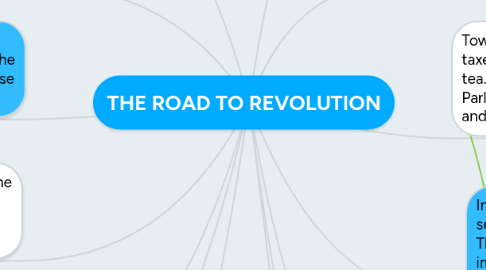THE ROAD TO REVOLUTION
by Molly Fox

1. Daughter of Liberty: The group of colonists, particularly women, were involved in the boycotting against the British and the Townshend Acts.
2. French and Indian War: France had the idea to expand upon the Ohio River Valley and this created constant conflict with the British which resulted in a 7 year war that started in 1756 and ended in 1763.
3. Boston Massacre: The shooting of 5 colonists by the British soldiers because of growing tensions due to the British arrival in Massachusetts.
4. Proclamation of 1763: Great Britain's obtaining of French Territory after the French and Indian War, issued by King George III.
5. Boston Tea Party: Protest taking by the Sons of Liberty in which they threw several tea crates into the Boston Harbor to challenge the tariffs.
6. First Continental Congress: On September 5, delegates from 12 of the 13 colonies came together in response to the Coercive Acts.
7. Second Continental Congress: This meeting managed efforts on war and helped to move the United States toward freedom.
8. Declaration of Independence: This document was written to state the reasons why American sought it's freedoms from British rule.
9. Sugar Act: The sugar act was implemented to gain an income from colonists by placing a tariff on sugar, causing the price to rise.
10. Sons of Liberty: This organization was a secret society that was formed in the 13 colonies in order to protect the rights of the colonists against the British rule. It was specifically designed to fight against taxation.
11. Intolerable Acts (Coercive Acts): These sets of laws were passed in 1774 after The Boston Tea Party and were implemented to punish the colonists for their deviance and protest.
12. Townshend Acts: The acts imposed taxes on glass, lead, paints, paper and tea. Many colonists thought that Parliament was abusing their power and many began to speak out.
13. The Quartering Act: This act was passed outlining the locations in which British soldiers were allowed to invade homes of colonists and they were required to take care of them during their stay
14. The Stamp Act: This act was passed on March 22, 1765 taxing all Americans on every paper product used. Examples: legal documents, newspapers and playing cards


